Senegal
Senegal, in long form the Republic of Senegal, is a country in West Africa. It is bordered by the Atlantic Ocean to the west, Mauritania to the north-northeast, Mali to the east-southeast, Guinea to the southeast and Guinea-Bissau to the south-southwest . The Gambia forms a quasi-enclave in Senegal, penetrating more than 300 km inland. The Cape Verde Islands are located 560 km from the Senegalese coast. The country owes its name to the river which borders it to the east and north and which has its source in Fouta-Djalon in Guinea. The climate is tropical and dry with two seasons: the dry season and the rainy season. Senegal is part of the Economic Community of West African States (ECOWAS). Since April 2, 2012, the president of the country is Macky Sall. Integrated into the main bodies of the international community, Senegal is also part of the African Union (AU), the Community of Sahelo-Saharan States (ETUC), the International Organization of La Francophonie and the Organization of the Islamic cooperation.
Senegal’s history
The current territory of Senegal has seen the development of several kingdoms including the Djolof, vassals of the successive empires of Ghana, Mali and Songhai. After 1591, he suffered the political fragmentation of West Africa following the battle of Tondibi. In the 17th century, several trading posts belonging to different European colonial empires were established along the coast, they served as a support for triangular trade. France gradually takes the ascendancy over the other powers then erects Saint-Louis, Gorée, Dakar and Rufisque in French communes governed according to the statute of the Four communes. With the Industrial Revolution, France wanted to build a railway in order to link them and entered into conflict with the Damel du Cayor, Lat Dior. This conflict enabled France to officially make Cayor a protectorate in 1886, a year after the end of the Berlin conference. The colonization of the whole of West Africa is then initiated and Saint-Louis, then Dakar will become the two successive capitals of French West Africa created in 1895. Dakar then becomes the capital of the Senegalese Republic in moment of independence in 1960. Unlike the other former colonies of French West Africa (AOF), modern independent Senegal is therefore the result of the regrouping of a territory populated by former French citizens (the Four communes) and a territory populated by former natives (the rest of the country).
Prehistory
Most often the prehistory and protohistory of Senegal evoke above all the megalithic circles of Senegambia or the artificial shell mounds, such as those of the island of Fadiouth. Almond bifaces from the Lower Paleolithic have been discovered in the Cape Verde peninsula, as well as other more elaborate stone objects (choppers, scrapers) in the Rufisque region and along the rivers of eastern Senegal. In the Neolithic, the tools diversified and ceramics appeared. The excavations carried out in the coastal regions have brought to light kitchen remains which bear witness to a large population of fishermen and traders (Khant’s backwaters in the delta, mouth of the Saloum). Metallurgy developed in protohistoric times (1st millennium BC), where we find tombs in the form of mounds. In the center of the country, spilling over to the present Gambia, there is a set of circles of megaliths over an area of 100 km by 250 km. This type of alignment is found in the northeast of the Central African Republic.
First kingdoms
The populations were gradually consolidated to lead to the creation of the first kingdoms which were formed in the 7th century, the Toucouleurs founded Tekrour, the Kingdom of Namandirou, then Djolof, with distant relatives to the empire of Ghana. Among the various kingdoms, the most powerful in the fourteenth century was the Djolof empire which included Cayor, Baol, the Serer kingdoms of Sine and Saloum, Waalo, Fouta-Toro and Bambouk. In the south of the country, the state of Kaabu, then Fouladou. Djolof was an empire founded by Ndiadiane Ndiaye, first bourba (king) djolof. He had been elected as chief in what was to become the kingdom of Oualo, northwest of present-day Senegal, in the river region. He had brought together all the populations of the Wolof ethnic group to found this empire in the 13th century. The empire collapsed in 1549, with the death of the last emperor of Djolof, Lélé Fouli Fak, killed by Amary Ngoné Sobel Fall, then head of the region of Cayor. Islam was introduced to Senegal for the first time between the 8th century and the 9th century through Arab-Berber traders. They spread this religion peacefully and convert the Toucouleurs, who spread it everywhere in Senegal. Later, in the 11th century, the Almoravids, helped by the Toucouleurs, attempted to Islamize traditional religion groups by Jihad. This is one of the reasons which led to the migration of the Sereres to Sine Saloum, the Wolofs, the Peuls and the Mandingos, who were all concentrated in Tekrour. A popular legend, sung by griots and illustrated by the poet-president Senghor, also links the parentage of the first Bourba Djolof Ndiadiane N’Diaye to the Almoravid dynasty (founder of Marrakech and responsible for the attack repulsed by the famous “Cid”). Islam spread very early in the Djolof empire. But it was in the 19th century that it truly won over all the populations, peacefully, thanks to the marabouts and their brotherhoods such as El Hadji Malick Sy for the tijaniyya or Ahmadou Bamba, founder of the Mouride brotherhood, which amazed the populations by their erudition and their miracles. It is also a means for the populations to unite and protect themselves against the ravages that the kingdoms experienced in the 19th century (repeated jihads, forced colonization).
The nineteenth century was indeed marked by the fall of kingdoms, the advance of European settlers and by anti-colonial resistance, illustrated by characters such as Aline Sitoé Diatta, Sidya Ndaté Yalla Diop, Oumar Tall, Mamadou Lamine Dramé, Alboury Ndiaye , Alpha Molo, Maba Diakhou Bâ, Ndaté Yalla, Moussa Molo Balde, Djignabo Badji, Lat Dior … The Catholic religion spread with European missionaries from the 19th century, especially in Sine Saloum and Casamance.
Colonization
The first counters
The navigator Alvise Cadamosto discovered these lands on behalf of Portugal between 1442 and 1456. The Portuguese then quickly embarked on the slave trade, captured by the local population and bartered, but would soon have to face competition from British slave traders, French and Dutch through Triangular Trade. The Dutch founded a trading post on the island of Gorée, France established in 1659 that of Saint-Louis which would become the first capital of Senegal. In 1677, the French in turn occupied the island of Gorée (one of the main centers of the slave trade in Senegal with Saint-Louis and the fort of James Island in The Gambia). The eighteenth and nineteenth centuries saw the peak of the Signares, rich Métis traders, centered in Gorée and Saint-Louis. After the prohibition of the slave trade by England and France at the beginning of the XIXth century, the colonization proper is done thanks to the implementation of this prohibition by these two countries, in Gambia and Senegal respectively . The second Republic of 1848 created a deputy mandate for Saint Louis. The colonial order was essential with Louis Faidherbe, governor of Senegal (territory of the Four Communes) from 1854 to 1861 and from 1863 to 1865, who laid the foundations for the future French West Africa (AOF). Respectful of indigenous customs, he extended the French influence far beyond Senegal, worked to develop the local economy and created the port of Dakar. The third Republic consecrates the status of the four municipalities in Saint-Louis, Gorée, Dakar and Rufisque.
After the Berlin conference
The Berlin conference ended on February 26, 1885, the European powers then shared Africa and now annexed the kingdoms located inland. The colonization of the whole of West Africa ended a few years later. French West Africa (AOF) was created in 1895. Two statutes were to coexist among the population, the inhabitants of the four communes were full-fledged French citizens while the populations of the newly colonized territories were subjected to indigenity . Under the influence of the black deputy Blaise Diagne, a particular statute can be chosen by the inhabitants of the four communes from 1916. The latter send conscripts during the two world conflicts. In 1919, certain troubles agitated Dakar. The rifleman Cheikou Cisse, born in French Sudan and wounded during the war, was sentenced to life imprisonment and sent to the penal colony of New Caledonia. Died in 1933, he was the subject of a struggle on the part of French anti-colonial circles (including the Secours Rouge International and the Communist SFIC). After Saint-Louis, Dakar became, in 1902, the capital of French West Africa. In the 1950s, at the end of the colonial regime, experts opposed the Wolof and Mouride agricultural model, deemed too destructive for agricultural soils, and posed as a standard model of virtuous agricultural intensification the agriculture of Sereres. In April 1959, the Sudanese Republic (present-day Mali) and Senegal merge to form the Federation of Mali. On June 20, 1960 the federation became independent following the transfers of powers agreed in the agreement signed in France on April 4, 1960. This date is considered as the official day of Senegal’s independence.
Independence
Senegal’s politics
Senegal is one of the most stable countries in Africa because there has never been a coup, and the “Senegalese model” was often put forward in the past, even if Amnesty International still denounces a few political arrests.
Senegal is a democratic republic (presence of several political parties). The regime is semi-presidential because at independence, Senegal adapted the French political model of 1958 like other African countries which were members of the AOF. The constitution of Senegal dates from 1959, it was revised in 1960 by Léopold Sédar Senghor following a referendum. Several revisions will follow one another, notably that of 1963 which establishes the presidential regime (at that time: suppression of the Prime Minister) and then that of 2001 which reduces the presidential mandate from seven years to five years (the Senate will be suppressed and then re-established in 2007).
The President of the Republic is the Head of State, elected by direct universal suffrage for a period of five years renewable once. He appoints the Prime Minister, who in turn chooses the ministers of his cabinet and proposes their appointment to the President of the Republic. The first president is Léopold Sédar Senghor, charismatic leader and renowned poet. In 1981 his Prime Minister Abdou Diouf took over, but in 2000 the Senegalese Democratic Party won with Abdoulaye Wade, re-elected in 2007. The presidential election of 2012 saw the victory of Macky Sall against Abdoulaye Wade. The current Parliament of Senegal has only one chamber: the National Assembly.
Established on August 20, 1960, the National Assembly welcomes 150 deputies, elected by direct universal suffrage for a period of five years. The ballot is majority in a turn at the level of the departments up to 90 deputies and proportional on a national list up to 60 deputies. The Assembly is today chaired by Moustapha Niasse, installed on July 31, 2012 following the legislative elections of the 1st, marked by a very large victory for the presidential coalition Bennoo Bokk Yakar. The Senegalese legislative elections of 2007 ended in a very large victory for the presidential coalition, then the PDS, but almost two thirds of the voters did not go to the polls, in particular because of a slogan of boycott by opposition parties. The Senate, which was abolished in 2001 following a constitutional referendum, was reinstated in May 2007 and then abolished again in 2012 after the presidential election. The senators were 100 in number, 35 were elected by indirect suffrage in the departments and the other 65 were appointed by the head of state. The Senate’s last president was Pape Diop, former mayor of the city of Dakar.
The law on decentralization, implemented in January 1997, grants significant powers to regional assemblies. Suppressed in 1992, the Supreme Court of Senegal had been replaced by three specialized bodies, the Court of Cassation, the Council of State and the Constitutional Council, quite similar to their French counterparts. In August 2008 an organic law recreated a Supreme Court by the merger between the Court of Cassation and the Council of State. The Constitutional Council consists of five members who are appointed by decree for six non-renewable years, including a president and a vice-president. It is partially renewed every two years, with a maximum of two members. Its role is to monitor legislative elections and verify the constitutionality of laws and international commitments. Senegal abolished the death penalty on December 10, 2004. Homosexual intercourse is punishable by prison terms.
Senegal’s economy
Until 1814, colonial trading posts were to have only a commercial function and were prohibited from developing a production activity. “Not even a nail” according to Colbert. From 1814, on the contrary, the colonies had an obligation of self-sufficiency, this obligation was confirmed in 1866. Senegal has the fourth largest economy in the West African sub-region after Nigeria, Côte d’Ivoire and Ghana. Given its geographic location and political stability, Senegal is one of the most industrialized African countries with the presence of multinationals which are mainly of French origin and to a lesser extent American. The country’s workforce is divided like this: 15.5% is devoted to agriculture, 21.7% to industries and 62.3% is devoted to services. The Senegalese economy is mainly turned towards Europe and India. Its main economic partners are France, India, Italy. However, for several years, China has been an increasingly growing partner as evidenced by the China-Africa summits.
Compared to other countries on the African continent, Senegal is very poor in natural resources; its main revenue comes from fishing, tourism and services: fishing is the main source of foreign exchange in Senegal. Since the reduction of the customs tax, this has boosted exports to the detriment of the seabed ecosystem; tourism is mainly developed on the coast with large international hotel complexes and high quality local hotels. Senegal is a member of the West African Economic and Monetary Union.
In 1994, the currency was devalued and a policy of liberalization was actively pursued. Senegal is trying to enter the conditions required by the International Monetary Fund (IMF) in order to benefit from debt relief for the development of the country. Since 2006, Senegal has been in the list of eligible countries. The economic difficulties due to the weight of the debt led to a strengthening of unionism: Unionism in Senegal was in its early days a force of opposition to colonialism, but now it is various political factions which support the trade union organizations. These unions have the capacity to organize a strike in two neighboring states or to participate in meetings on NEPAD; the weight of the external debt of this highly indebted poor country (HIPC) and the agricultural sector which employs around 70% of the Senegalese population leaves little room for an economic take-off. In addition, Senegalese agriculture is very sensitive to climatic hazards and locust invasions.
In 2015, President Sall announced his plan to make Diamniadio a modern city in order to unclog the capital Dakar. Thus, many projects have emerged in this future city. We can take the example of Blaise Diagne airport (open to the public since 2018), the regional express train which will be put into service in 2019, the 5-star hotel, the heavy lift station, the stadium, social housing. and other projects to come. Senegal receives technical support from the IMF in fiscal year 2015-2017 as a policy support instrument (PSI) to help implement the PES. PSI implementation continues to be satisfactory, as concluded by the IMF’s second review mission in March 2016. Investors have expressed their confidence in the country thanks to successful Eurobonds issues from Senegal these last years, including in 2014. The government will focus on 19 projects under the PES for the 2016 budget to continue the structural transformation of the economy. These 19 projects include the Thiès-Touba motorway, including the new Mbour-Thiès airport. Senegal will increase the national family allowance program and the emergency community development program in 2016. Electricity supply is a major constraint for Senegal’s development. Electricity prices in Senegal are among the highest in the world. Power Africa, a program led by USAID and OPIC, plans to increase current generation capacity from 500 MW to over 1,000 mW over the next three to five years. Recent gas discoveries at the Senegal-Mauritanian border and south of Dakar will help to alleviate some of the energy shortages.
Senegal’s demography
The population of Senegal, which had approximately 1 million inhabitants in 1900 and 2.8 million at the time of independence in 1960, today stands at 13,508,715 people according to the census carried out in 2013. In 2017, the population of Senegal is estimated at 15,256,364 inhabitants (including 7,596,945 men and 7,659,419 women). And could reach 15,726,000 people in 2018. This population is therefore growing very rapidly, with a fertility rate higher than four children per woman. There is a great ethnic diversity: Wolofs (51.8%), Peuls (18.5%), Sérères (11.5%), Diolas (4.7%), Malinkés (3.1%), Soninkés (2%) Manjaques (0.6%) and a few other less numerous and more localized ethnic groups, not to mention the Lebanese, Mauritanians, Moroccans, Europeans and Chinese, fairly present in urban areas. At the end of 2007, 16,966 French people were registered in the consular registers (including binationals). For a long time, the population was rather concentrated on the Atlantic coast, but the rural exodus increased the inequality of this distribution. Now, one in four Senegalese lives on the Cape Verde peninsula and the capital is on the verge of suffocation. Besides that of Dakar, the most urbanized regions are Ziguinchor, Thiès and Saint-Louis. The least urbanized are those of Kolda, Matam and Fatick. The lowest density is found in the Tambacounda region (11 inhabitants per km2). According to estimates for 2017, the regional urban centers of more than 100,000 inhabitants are Touba (529,176) which has experienced spectacular growth, Thiès (2,049,764), Kaolack (1,120,404), M’bour (181,825) , Saint-Louis (1,036,009), Ziguinchor (158,370) and Diourbel (1,746,496). In 2007, Senegal was home to approximately 23,800 refugees and asylum seekers, more than 20,000 of whom were Mauritanians who fled ethnic persecution, as well as some from Liberia, Sierra Leone and other countries.
Senegal’s education
Education in Senegal is one of the most advanced on the continent. Senegal can boast of having quality education with diploma equivalents from the most prestigious foreign universities in both France and the United States. This also allows exchanges with students who come to study in Senegal as part of specific studies on the country or Senegalese students who go abroad to diversify their knowledge in the context of research. As the population is very young, the demand for training is very high, not to mention the youth of other poorer African countries who are trying to finish their studies in Dakar.
Despite a similar baccalaureate success rate in 2000 (37.67%) and in 2011 (38.4%), the number of baccalaureate graduates fell from 9,000 to 30,000. And naturally, 80% of these graduates sought to enroll in the faculty, “object of social advancement and pride, for which families and students are ready to make enormous sacrifices”, explains researcher Olivier Provini, who works on African university reforms . The major problem facing these many baccalaureate graduates is the French expression: throughout their educational progress, they have to juggle between French and the national language, Wolof. New public universities were created in Bambey, Thiès and Ziguinchor and the salaries of professors were revised upwards under the chairmanship of Abdoulaye Wade. This helped curb the brain drain from the universities and encouraged the return of some who were in Europe, the United States and elsewhere in Africa. Kaolack University will soon open its doors also under the chairmanship of the new President of the Republic Macky Sall. This new university will allow the congestion of other universities in the country but also the orientation of a large number of students. This will also allow the development of other regions of the country. Senegal is a member of the Francophonie organization (currently headed by its former President Abdou Diouf, re-elected in 2010 as head of this international organization) and has become an observer country within the community of Portuguese-speaking countries (CPLP ). Senegal plans to become a full member of the CPLP while Portuguese is only spoken by a very small part of the population. The inauguration of the second university in Dakar and that of Sine Saloum is scheduled for early 2017.
Senegal’s languages
There is great linguistic diversity across languages in Senegal. The 2001 Constitution recognized French as an official language and six languages that of national languages, Wolof, the language spoken by the greatest number of people even belonging to other ethnicities, Serer, Fulani (also called Fulfulde or pular), mandingo, soninké and diola. Five other vernacular languages were promoted soon after: hassanya, balante, mancagne, noon and manjaque; followed by three other languages: Menik, Oniyan and Saafi-Saafi. In total, 21 languages out of 27 listed benefit from the status of national language in Senegal. Senegal has been a member of the Parliamentary Assembly of the Francophonie since 1967 as well as of the International Organization of the Francophonie since 1970. French is the official and administrative language, spoken by 29% of Senegalese. Public school teaching is in French. Wolof, spoken by 93.5% of the population, is the language with the most speakers, mainly in large urban centers. It is widely used in commerce and serves as a language of communication between people speaking different languages. Arabic is also present in the country, it is often used by religious dignitaries. Most Senegalese who speak this language have studied Islamic theology.
-
Senegal
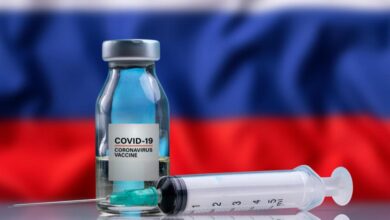
Senegal Receives First Batch Of 200,000 Doses Of China’s COVID-19 Vaccine Sinopharm
Senegal on Wednesday received the first batch of 200,000 doses of China’s COVID-19 vaccine Sinopharm, reported Africa News. The Senegalese…
Read More » -
Senegal
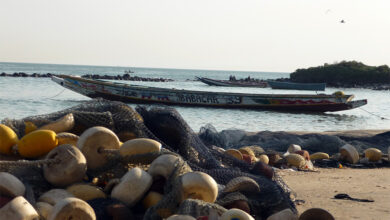
Senegal: At Least 140 People Drown After Boat Carrying 200 Migrants Sinks
The United Nations migration agency on Thursday said that at least 140 people have drowned after a vessel carrying around…
Read More » -
Senegal
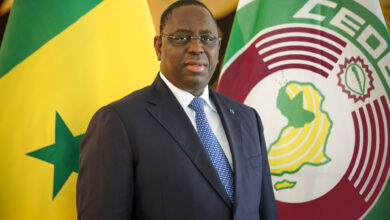
Senegalese President Macky Sall Dissolves Government, New Cabinet Yet To Be Named
Senegalese President Macky Sall dissolved his government on Wednesday, terminating the functions of all ministers, according to a statement from…
Read More » -
Senegal

Senegalese President Macky Sall Quarantines Himself After Contact With COVID-19 Case
Senegalese President Macky Sall has quarantined himself for two weeks as a precaution after he came in contact with someone…
Read More » -
Senegal
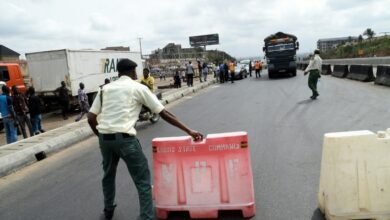
Senegal: Government Announces Ease In Curfew Timing Following Violent Protests
Senegal government on Thursday announced it has decided to roll back some lockdown restrictions in the country after two nights…
Read More » -
Senegal

Senegal Postpones Re-Opening Of Schools After Reporting Fresh Coronavirus Cases
The Senegal government on Tuesday decided to postpone the reopening of schools after a cluster of coronavirus infections was detected…
Read More » -
Senegal

Senegal: President Macky Sall Announces Ease In Coronavirus Lockdown Measures
Senegalese President Macky Sall announced on Monday the re-opening of mosques and churches and the easing of other restrictions imposed…
Read More » -
Health
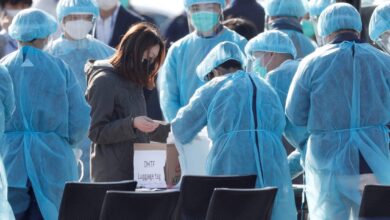
Ivory Coast, Senegal Declare State Of Emergency To Curb Coronavirus Growth
Ivory Coast President Alassane Ouattara and Senegalese President Macky Sall on Monday declared a state of emergency, imposing curfews and…
Read More »

